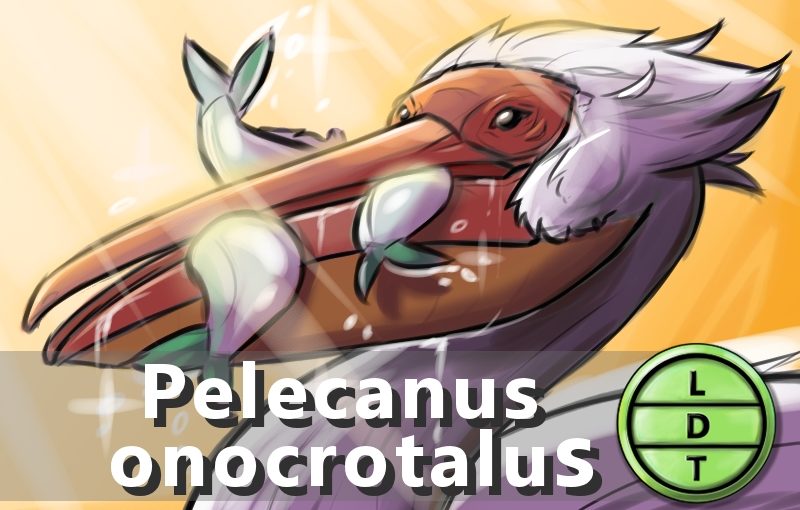“… and today we’re talking about an animal that’s great and white. No, not that great white animal! More on that later.”
Food is limited and the flock is many. For most animals, seeking to feed yourself first and then resting to conserve energy, is the best way to survive. But without the aid of rigorous cost-benefit analysis, some animals see fit to cooperate with one another to find food. That can mean expending precious caloric resources to feed someone else. But why? For many animals, it’s worth it to walk the razor’s edge between cooperation and resource guarding. When food is hard to get on your own, it may be time to work together in Life, Death, and Taxonomy.\
Measure Up
Welcome to the beloved Measure Up segment. The official listener’s favorite part of the show! The part of the show when we present the animal’s size and dimension in relatable terms through a quiz that’s fun for the whole family. It’s also the part of the show that’s introduced by you when you send in audio of yourself saying, singing, or chittering the words measure up into ldtaxonomy at gmail dot com. We have a new measure up intro from Josh. this one was also procured by Carlos, who’s this person?
Length
- 140 to 180 cm (55 to 71 in) in length
- 70 inches
- How many pelicans go into the height of Mount Elbrus, the tallest mountain in Europe?
- Hint: Mount Elbrus is a dormant volcano in Russia. It rises high above the surrounding landscape and is always covered in a snowcap. It’s quite striking, look up a pic.
- Answer: 3,173 pelicans. The mountain 5,642 m (18,510 ft)
Adult Male Weight
- 9 to 15 kg (20 to 33 lb)
- 30 lbs
- How many pelicans go into the weight capacity of a Pelican Bass Raider 10E 10’2”?
- Hint: The boats own weight is about 165 lbs (75 kg). It’s designed to access areas where larger fishing vessels would not be able to access.
- Answer: 20 pelicans. The boats weight capacity is 600 lbs (272 kg)
Major Fact: Feeding Friends. See?
- A few months ago, I was waiting for a boat to take me to China.
- That is, I was at Disney’s Epcot and I was planning on catching a ferry for a quick trip to The World Showcase.
- While I waited, I watched a small anhinga dive for fish. Anhingas are long-necked water birds also called snake birds or water turkeys.
- After a short time, the anhinga popped up with a fish that was much bigger than his head.
- I was excited to see how on earth he would get this large lunch down his thin gullet. I’m not sure he had a plan either, because he struggled to get it on top of a dock post, and benignly smacked it against the wood.
- It was then that a much larger cormorant swooped in to relieve the anhinga of his geometric conundrum.
- The two birds dove into the water with the fish. After a beat, the cormorant emerged with the prize and the disillusioned anhinga rested in the shade of the post, contemplating the cruel unfairness of bird life.
- This behavior is called kleptoparasitism. Waiting for another animal to do the hard work and then strong winging it into giving you the rewards.
- Anyone who’s ever tried to eat a burger at the beach or found a bag of fries in a parking lot, knows that birds are greedy little thieves.
- The opposite of kleptoparasitism may be cooperative foraging. It’s the practice of working together to catch prey.
- It’s popular among mammals, who are the GOATs of complex social cooperation, perhaps after ants.
- Wolves, lions, hyenas, and whales all work together to catch prey they might not otherwise be able to catch.
- This behavior isn’t as common in birds. But there are exceptions, like the Great White Pelican.
Great White Pelicans and their American cousins the American White Pelicans often engage in cooperative feeding.
- They can feed alone, but most of the time they feed together in a cooperative manner.
- Pelicans need up to three pounds of fish everyday, which may be about three fish a day, based on the size they go after.
- They feed by scooping up water and fish into their pouches, and then contracting the pouch to force water out through narrow openings between their beaks.
- When they feed, six to eight pelicans swim in a horseshoe pattern to coral a school of fish into tight clusters.
- Then they dip their bills underwater at the same time to create net-like death trap for the fish.
- It’s like the difference between net fishing and angling. You’re more likely to get higher yields with a larger surface area.
- Fish make up the majority of the adult pelican’s diet.
- If you’re still mad at the cormorant from earlier, don’t worry. Cormorant eggs and chicks make up a large part of a young pelican’s diet!

